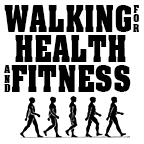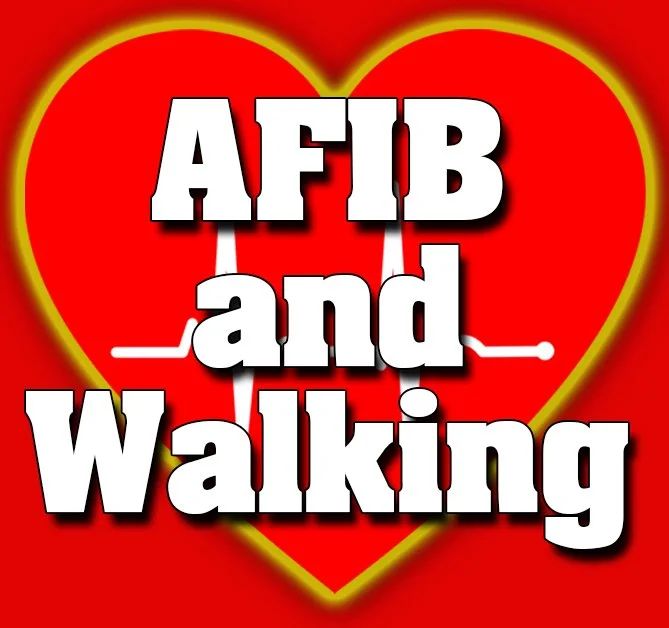The Walking for Health and Fitness Podcast episode 16 is all about Atrial Fibrillation (AFIB) and managing the anxiety that comes with it. AFIB is a quivering or irregular heartbeat or arrhythmia. AFib, or AF, can lead to blood clots, stroke, heart failure, and other heart-related complications.
The anxiety of another AFIB episode is a major byproduct of AFIB and is often the reason many AFIB patients do not exercise enough.
My guest, Big Norther Bear shares his insights into dealing with his AFIB episodes and how walking plays a crucial role in keeping him free of an AFIB episode. Danny recently celebrated one year without of being AFIB free.
“The best thing you can do is walk an hour a day.”
-Big Northern Bear’s Cardiologist
Listen to Ep. 16: AFIB and Walking - Managing the Anxiety of Atrial Fibrillation
Watch the Video: AFIB and Walking - Managing the Anxiety of Atrial Fibrillation
“While being in AFIB too long can trigger another arrhythmia that is deadly BUT extremely rare we always remind each other that no one dies from AFIB, but the co-morbidities that probably led you to AFIB are going to come along and kill you. AFIB is your warning sign!”
-Big Northern Bear -Big Northern Bear
Video Release 6 am, EST.
Walking has several positive effects on arteries and veins, which contribute to overall cardiovascular health and circulation. Here are five key points to consider:
Improved Blood Flow: Walking regularly promotes better blood circulation, which helps prevent the formation of blood clots and reduces the risk of conditions like deep vein thrombosis (DVT).
Lower Blood Pressure: Walking can help lower blood pressure over time, reducing the strain on arteries and veins. This decrease in pressure contributes to improved arterial and venous health.
Enhanced Vascular Health: Regular walking can improve the flexibility and elasticity of blood vessels, including arteries and veins, making them less prone to damage and atherosclerosis.
Reduced Inflammation: Walking has anti-inflammatory effects, which can help decrease inflammation in the blood vessels. This reduces the risk of plaque buildup and arterial stiffness.
Weight Management: Maintaining a healthy weight through walking can prevent obesity-related vascular issues, such as fatty deposits in arteries and increased pressure on veins, leading to a reduced risk of cardiovascular disease.
Incorporating a consistent walking routine into your daily life can have a positive impact on your cardiovascular system, supporting the health and function of your arteries and veins.
“Walking is the secret sauce that we’ve all been looking down our nose at like it’s not serious exercise, but in fact it’s probably the best exercise there is. When I walked a mile at lunchtime, it was easy, slow paced and relaxed, my weight loss for the week doubled.”
-Danny, Big Northern Bear
Walking’s Positive Effects on Arteries and Veins
Why Walking is Great for Heart Health
Improved Cardiovascular Fitness: Regular walking strengthens the heart muscle, making it more efficient at pumping blood and improving overall cardiovascular fitness.
Lowered Risk of Heart Disease: Walking can reduce the risk of heart disease by helping to manage risk factors such as high blood pressure, high cholesterol, and obesity.
Enhanced Blood Circulation: Walking promotes better blood circulation, ensuring that oxygen and nutrients are delivered efficiently to the heart and throughout the body.
Reduced Inflammation: It has an anti-inflammatory effect, reducing the inflammation markers in the body that are linked to heart disease.
Weight Management: Walking can aid in weight management or weight loss, which can alleviate strain on the heart and reduce the risk of heart-related conditions.
Incorporating walking into your daily routine is a simple and effective way to support heart health and reduce the risk of cardiovascular problems.
Click HERE to learn about the benefits of stretching… Your body will thank you!
Walking’s Effects on Circulation
Muscle Contraction: When you walk, your leg muscles contract and relax rhythmically. These contractions help squeeze the veins in your legs, pushing blood back towards the heart. This action is especially important for venous return, as it helps prevent blood from pooling in the lower extremities.
Increased Heart Rate: Walking at a brisk pace raises your heart rate. A faster heart rate means the heart pumps blood more frequently, increasing the volume of blood circulating through your arteries and veins. This increased cardiac output improves overall circulation.
Dilation of Blood Vessels: Physical activity, including walking, causes the blood vessels to dilate or expand. This vasodilation allows for greater blood flow through the arteries and veins, reducing resistance and promoting efficient circulation.
Improved Endothelial Function: Regular walking can improve the health and function of the endothelium, the inner lining of blood vessels. A healthier endothelium is better able to regulate blood flow, prevent inflammation, and maintain vascular tone.
Reduction in Blood Pressure: Walking regularly can lead to lower blood pressure over time. Reduced blood pressure means less force is exerted on the artery walls, reducing the risk of damage or narrowing, which can hinder blood flow.
Prevention of Blood Clots: Continuous leg movement during walking discourages the formation of blood clots, particularly in the deep veins of the legs. This helps prevent conditions like deep vein thrombosis (DVT).
Improved Lymphatic Flow: Walking also stimulates the lymphatic system, which plays a role in removing waste and toxins from the body. Better lymphatic circulation contributes to overall circulatory health.
In summary, walking enhances blood circulation by increasing heart rate, promoting the rhythmic contraction of muscles, and improving the health and function of blood vessels. These factors work together to ensure that blood is efficiently transported throughout the body, delivering oxygen and nutrients to cells while removing waste products.
Remember what Danny said, “While being in AFIB too long can trigger another arrhythmia that is deadly BUT extremely rare we always remind each other that no one dies from AFIB, but the co-morbidities that probably led you to AFIB are going to come along and kill you. AFIB is your warning sign!”
Big Northern Bear Information:
You can find Danny at BigNorthernbear.com - Danny's YouTube channel is Big Northern Bear, and he hosts the AFIB show.Danny’s YouTube channel, Podcast (Ticker Talks), Facebook page, and X (formerly Twitter) are dedicated to showing other AFIB sufferers that you can have an active lifestyle while managing your AFIB.
Walk on,
Frank S. Ring
Author: Walking for Health and Fitness, Fitness Walking and Bodyweight Exercises, Walking Inspiration, and Walking Logbook Journal.








